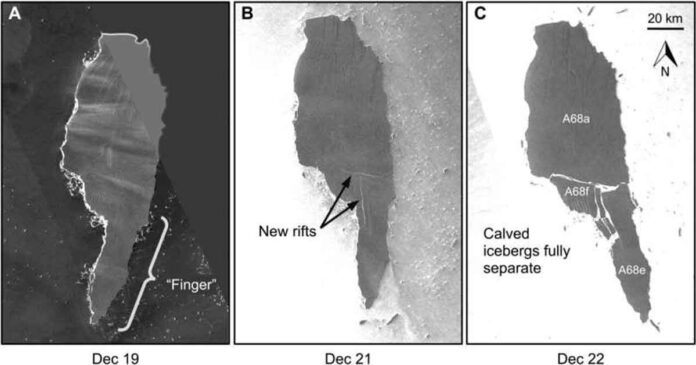A team of Princeton University researchers, working with a colleague from City University of New York, discovered evidence that a large portion of iceberg A68 broke away in 2020 due to shear forces caused by differences in ocean currents. The group describes their study of satellite images of the iceberg and the model they built to test their theory about why it broke apart in a paper published in the journal Science Advances.
Iceberg A68 was born in 2017 when it broke away from the Larsen C ice shelf. It was one of the largest icebergs ever seen, measuring approximately 5,890 square kilometres. Parts of the iceberg broke away three years later when its underside struck the ocean floor. A few months later, a finger nearly half its length separated for unknown reasons. The researchers wanted to know what caused the second break in this new effort.
The work entailed analysing satellite images of the iceberg as well as data from other sources that revealed what was going on in the Southern Ocean at the time. The researchers discovered what appeared to be a shearing incident. The iceberg transitioned from a slow current to a faster-moving cross-current. As a result of the shear forces, the finger portion of the iceberg broke away. The researchers used a model called Kinematic Iceberg Dynamics to simulate the conditions in the ocean at the time of the second breakaway to test their theory. It demonstrated that such shear forces could have caused the finger to break.
The researchers emphasise the importance of understanding what happens to icebergs as they travel south because as the planet warms, more of them will be released and set adrift. Because some of them are so large, they will release massive amounts of freshwater into the sea as they melt. They point out that meltwater can influence ocean circulation and stratify water columns. It can also have a significant impact on phytoplankton because massive amounts of iron are released into the sea as the ice melts.

